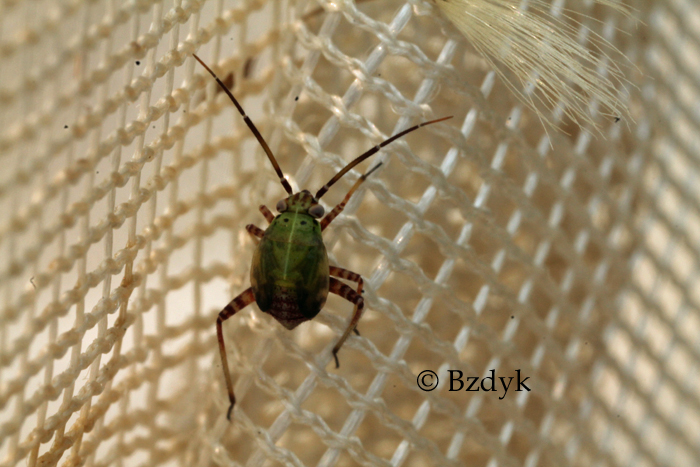When I say "Bugs", I'm not referring to the common term used to refer to insects or any other crawly small invertebrates. As I've mentioned
before, Bugs are a group of insects: the order Hemiptera. Bugs have a few unique characteristics. They feed with tubular mouth-part known as a rostrum. Their wings are often half leathery and tough, half membranous- giving
rise to their name: hemi(half) -ptera(wing). Insects life cycles are either holometabolous (complete metamorphosis) or hemimetabolous (incomplete metamorphosis). Bugs are hemimetabolous. The young bugs are called 'nymphs', and are basically
miniature adults without wings or reproductive organs. With
the final molt to adulthood they gain these features. Other holometabolous insects have 'larvae' that must go through a pupal stage before they become adults.
Here are a few photos I took over the summer (and in the past) of some interesting bugs and their nymphs.
Assasin bugs - Family Reduviidae
These two photos show nymphs, because they lack wings
These is an "ambush bug" in the subfamily Phymatinae.
An assasin bug nymph waits for a meal on a flower
These nymphs have recently hatched and are hanging around together as a gang, likely for protection.
A wheel bug nymph
An adult Wheel Bug
Stink bugs - Family Pentatomidae:
This adult, perched on a railing, and the previous nymphs are the familiar invasive Brown Marmorated Stink Bug. The first photo shows newly hatched first instar nymphs, still gathered around the empty eggshells. This bug is well known for it's habit of entering homes in the fall for a winter hibernation.

Two mating harlequin bugs
Various Leaf hoppers:
Many leafhoppers have very convincing camouflage
The previous 4 photos are of leaf-hoppers in the family Cicadellidae, known as sharpshooters. They fire droplets of excess sugar water from the end of their abdomens as they feed. If you feel like you are getting rained on while sitting under a tree, with a crystal blue sky... chances are you're getting "peed on".
These nymphs are being guarded and tended by ants, who in return drink the extra sugar water or "honeydew" they exude.
Here are some nymphs I didn't feel like identifying! A few of them are probably "Plant Bugs", family Miridae.



























